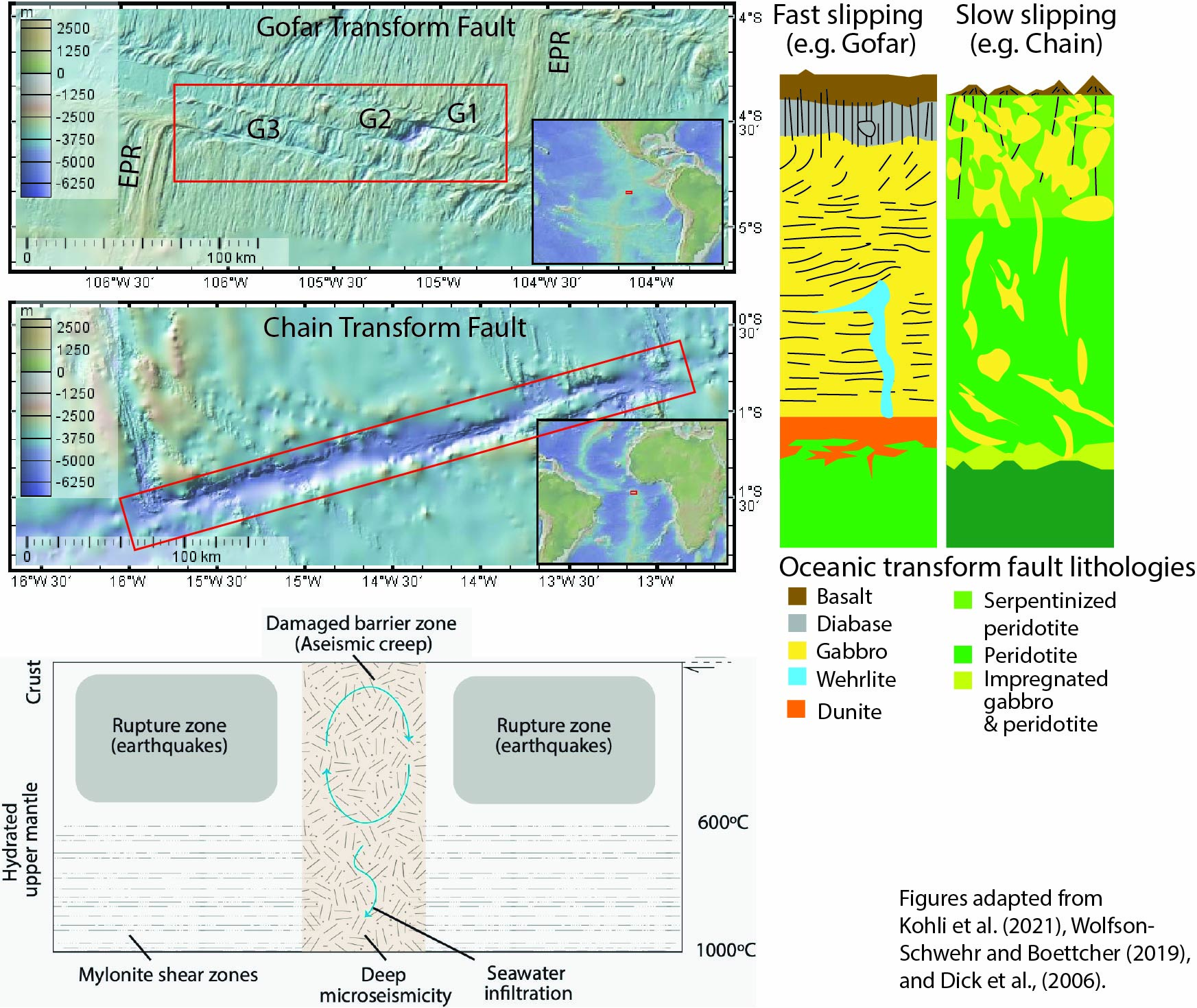
Petrophysical constraints on the slip behavior of oceanic transform faults
Information
Determining processes that cause a fault to slip slowly (i.e., aseismically without earthquakes) or rapidly (i.e., seismically causing an earthquake) is a long-standing goal of the earth and ocean sciences. Oceanic transform faults accommodate 85% of their slip aseismically, with earthquakes accommodating the remaining slip on discrete, localized fault patches. This offers a unique opportunity to study underlying solid-earth processes that allow accommodating plate motion through a combination of both aseismic and seismic slip. Several modeling studies and field-scale observations indicate that spatially variable material properties are correlated to differences in the slip behavior of oceanic transform faults. This project will advance our understanding of the underlying controls on the slip behavior of oceanic transform faults by elucidating the links between material properties determined in the field and in laboratory settings. Particularly, this project will determine how fault zone material properties control this variable slip behavior by analyzing crustal and upper mantle lithologies dredged from two oceanic transform faults: the slow-slipping Chain transform fault and the fast-slipping Gofar transform fault. Data on the petrophysical properties of these samples will be determined using various methods, including petrography, electron backscatter diffraction, micro-CT analysis, high-temperature pressure experiments, and effective medium modeling.
Goals
-
Elucidate the compositional controls, including the role of hydrothermal alteration, on slip behavior.
-
Decipher the role of fluids on slip behavior and the plausibility of dilatancy strengthening as a mechanism to prevent seismic slip.
-
Determine how strain is accommodated in different fault lithologies.
-
Characterize the geophysical signatures of crustal and upper mantle lithologies to aid in the interpretation of field-scale seismic data.
Collaborations and Questions
-
This is an active project and I would love to share and discuss ideas on this project at an upcoming conference. Check out the updates page for upcoming events to catch up. If you are interested in collaborating or have any questions, please feel free to reach out to me here.